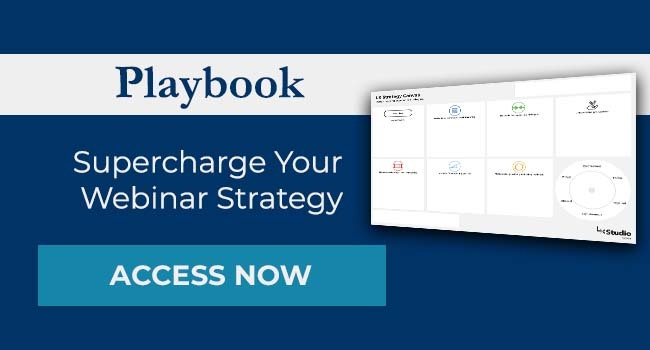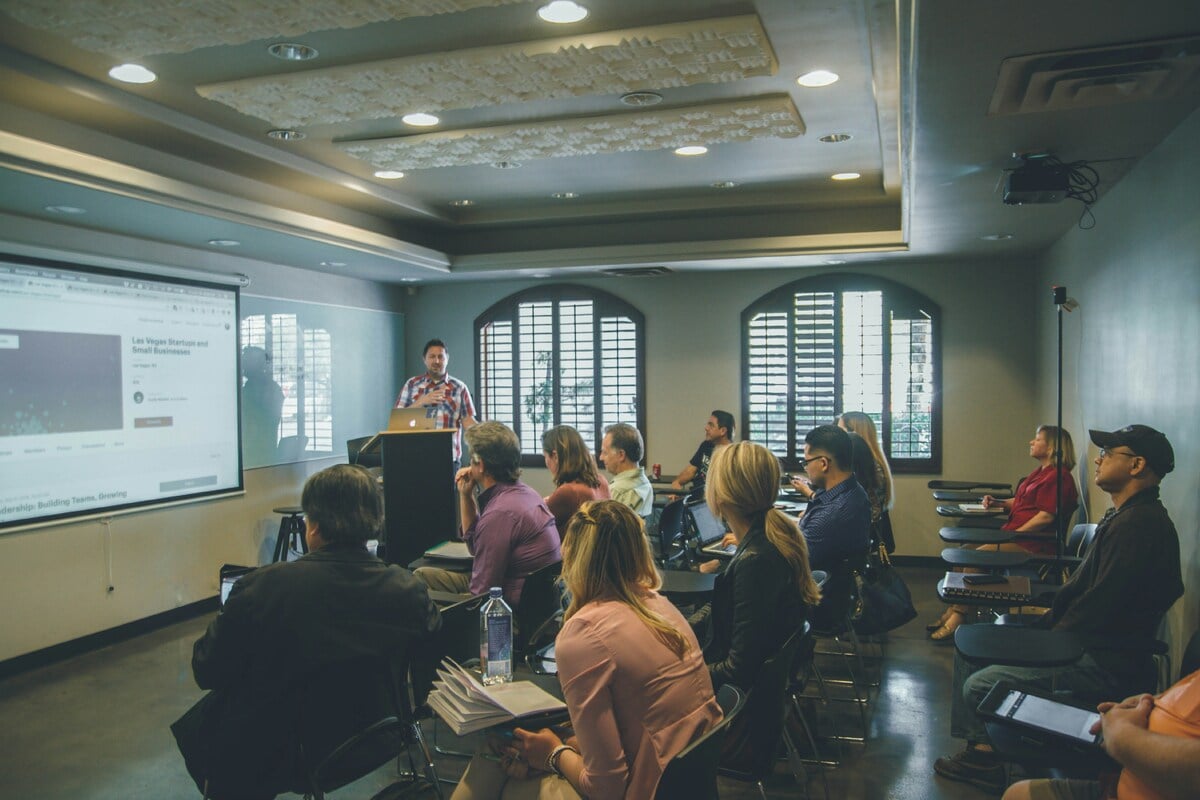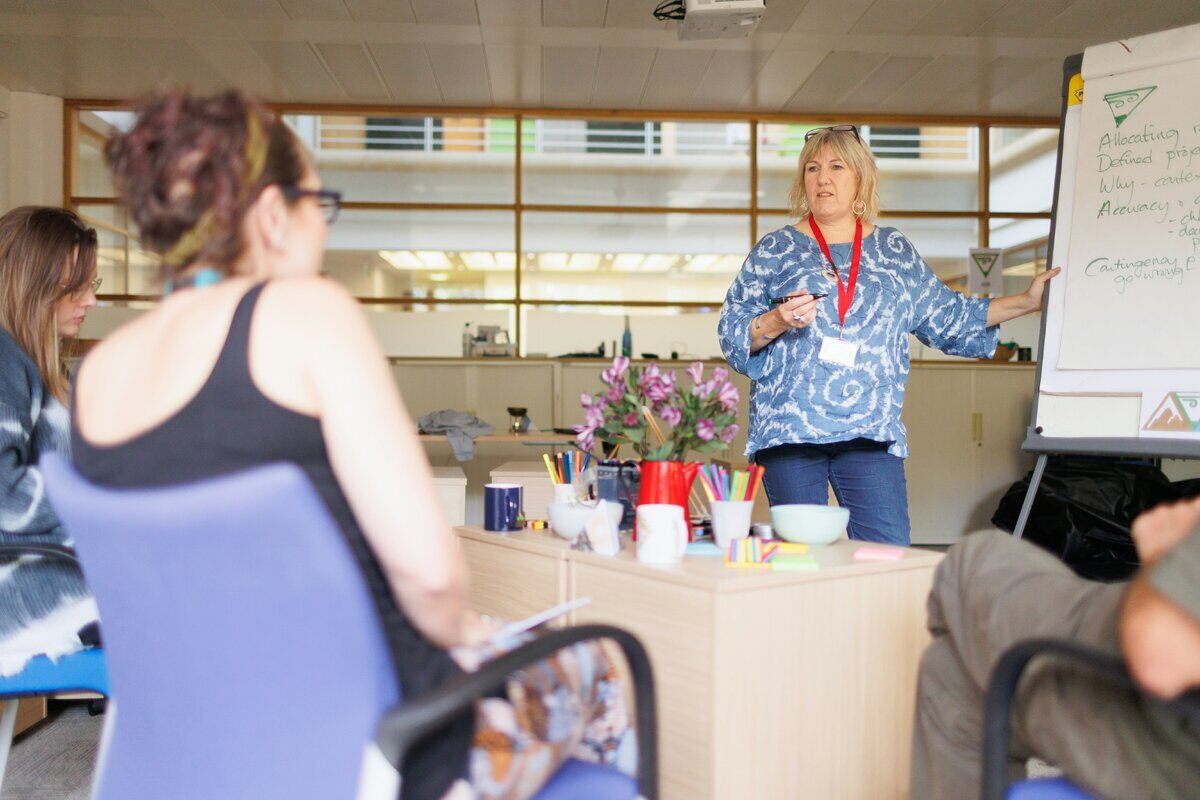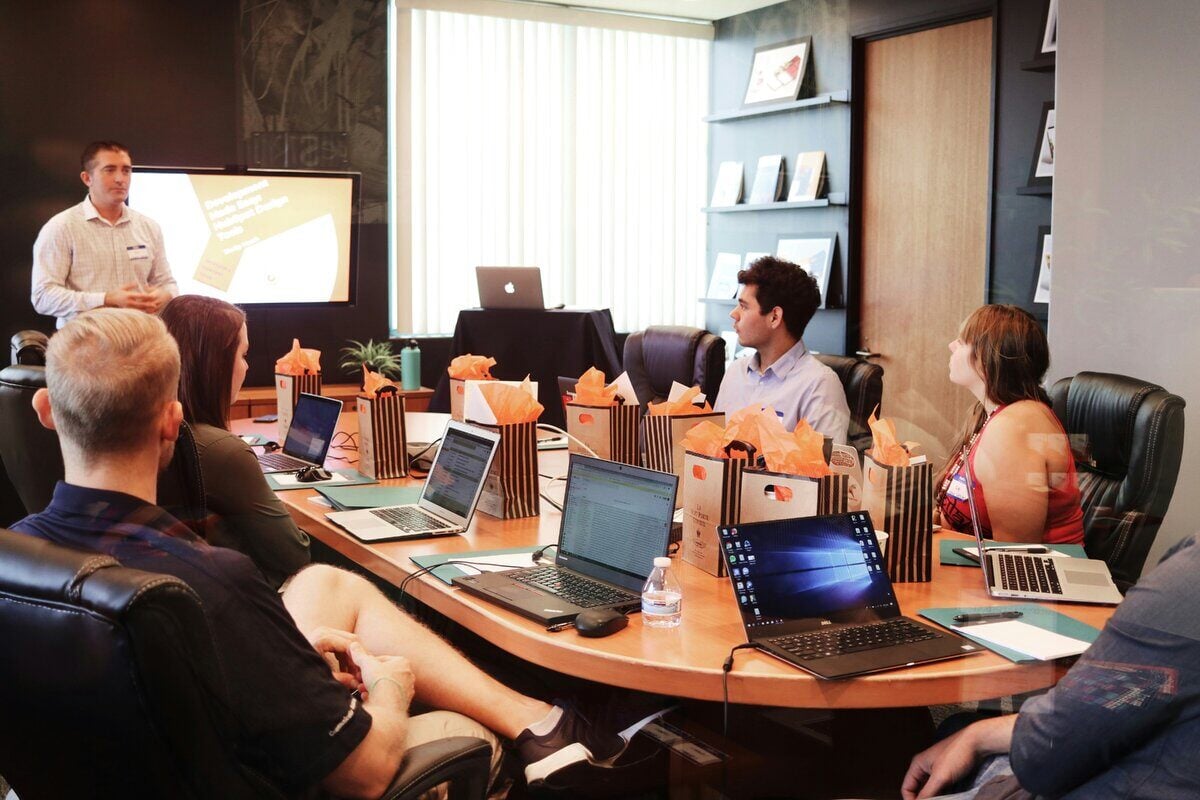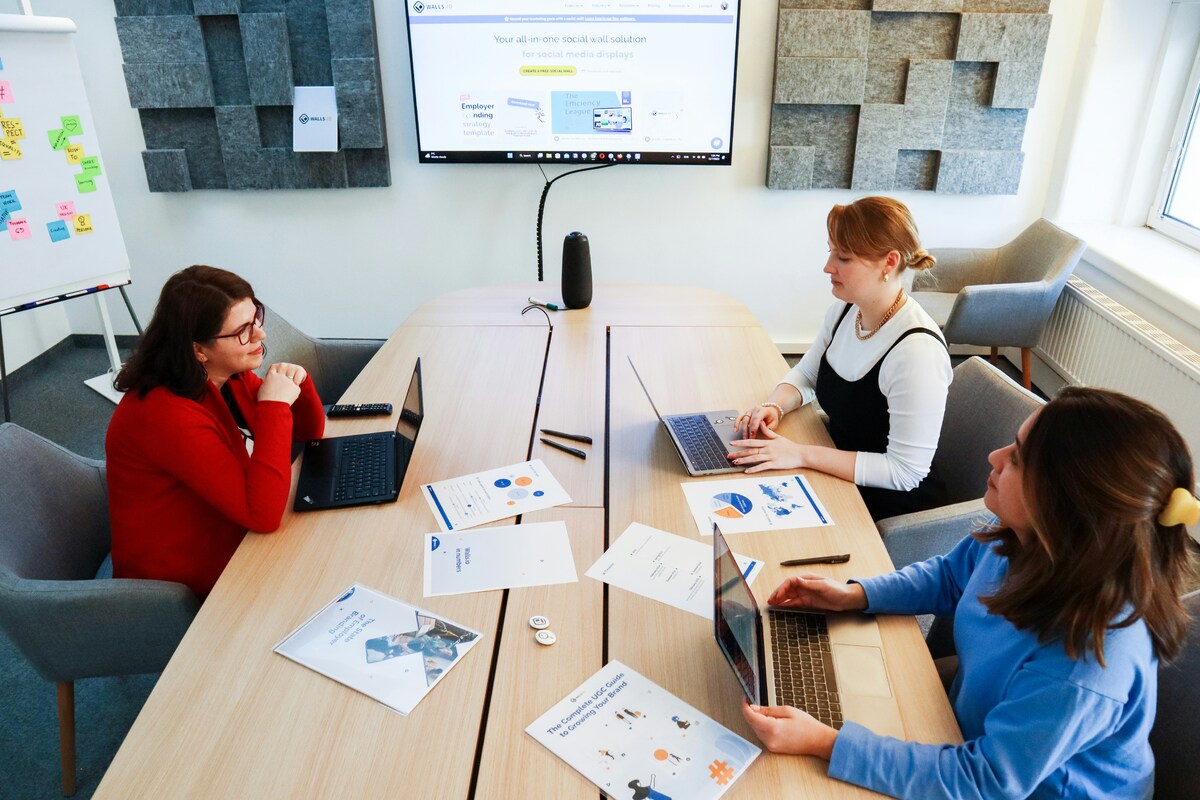
What Is Strategic Learning Design? A Beginner’s Guide
According to one recent study, approximately 55% of employees say they need additional training to perform better in their current role.
If you needed a single statistic to point to the fact that ongoing training and education is a good idea, that one will probably suffice.
But at the same time, the amount of money an institution invests in education isn't necessarily equal to the amount of value they'll receive in return.
Another report indicated that organizations with a robust learning culture are 92% more likely to develop innovative products and processes.
Have you put together a training program in the past but don't feel 92% more innovative?
Are you not yielding the 218% higher income per employee than a company without a formalized training program? There's likely a fairly straightforward reason for that.
If you put your time, money, and energy into the wrong type of learning, you may achieve outcomes - but they won't be ones that tie into what you had hoped to accomplish at the outset.
Enter: Strategic Learning Design.
This is an opportunity to take the type of theoretical knowledge that workers typically receive and translate it into the actionable skills they'll need to work smarter, not harder, every day.
This is true for a wide range of different reasons, all of which are worth a closer look.
Defining Strategic Learning Design
Also sometimes referred to as SLD for short, Strategic Learning Design is a new approach to how we design learning experiences - one built with today's modern student in mind.
It's intended to not just deliver information in a way that leans heavily on regurgitation - it also helps to drive meaningful performance outcomes as well.
Unlike traditional models that often focus on the content itself, SLD begins by asking deeper, more impactful questions.
What capabilities do we need to accomplish?
What strategic outcomes must this learning support?
How do we make learning more embedded, dynamic, and aligned with the broader goals of our organization?
These are just a few of the questions, at a baseline, that are examined and answered before work begins in earnest.
In this Strategic Learning Design framework, learning isn’t just an event or a course.
It becomes a tool for achieving competitive advantage, improving adaptability, and enabling long-term transformation.
A Shift From Content To Strategy
For literally decades, instructional design has often been synonymous with organizing and delivering content.
The people in charge of putting together the course curriculum really only asked themselves one question: what, exactly, does the person in question need to know?
They were less concerned with HOW or WHY someone needed to learn it, mostly due to an overall failure of the process.
The result?
Slide decks, eLearning modules, and sometimes even video libraries that, while thorough, often struggle to create real-world impact.
Strategic Learning Design, on the other hand, flips this script.
Instead of starting with content, it starts with strategic intent. What business challenge are we addressing?
What behavior needs to change?
What are the key levers of performance?
Only after answering these questions do developers and course designers explore the necessary learning tactics.
For example, imagine a company that’s shifting to a customer-centric model.
Instead of simply delivering a course on customer service, SLD would consider how to reshape onboarding, coaching, workflow tools, and cultural norms to support a sustained shift in mindset and behavior.
The end result is largely the same - people know exactly what you need them to.
But at the same time, the long-term impact is much more meaningful than if you were simply putting someone into a situation where they could successfully regurgitate information without truly applying it to their day-to-day lives.
Why It's Different From Traditional Instructional Design
While both approaches involve designing for learning, Strategic Learning Design differs in scope, focus, and methodology.
Traditional instructional design tends to focus on discrete learning events. SLD looks at the entire ecosystem—how learning is connected to performance, systems, culture, and metrics.
In terms of methodology and focus, SLD is, by design, more iterative and adaptive than other approaches, often borrowing techniques from business strategy, systems thinking, and design thinking.
Core Components Of Strategic Design
The core components of strategic design represent so much more than just a passive transfer of information.
They come together to act as a true engine for transformation in every sense of the term.
Aligning Learning With Organizational Goals
Remember that strategic design, in order to be as successful as possible, must start with a purpose.
The secret to success lies less in WHAT needs to be taught and is more about HOW and WHY.
That will inform everything from the overall structure of the learning to the execution, priorities, and more.
For example, if a company is preparing for digital transformation, training employees on software is not enough.
SLD would identify the broader competencies—like digital literacy, agile thinking, and collaboration across platforms—that align with that transformation and ensure the learning efforts directly support those strategic pillars.
This alignment also allows learning to speak the language of leadership.
Instead of measuring success in terms of attendance or satisfaction scores, we can evaluate impact based on KPIs that matter: faster onboarding, reduced errors, improved customer satisfaction, and more.
Designing For Real-World Contexts
Again, this is all about making sure that people have the tools needed to take the knowledge they're about to receive and apply it to the real world.
Learning that has nothing to do with this context tends to stay in the classroom. It certainly isn't taken with someone on the job.
This means designing experiences that mirror the real-world challenges learners face.
Case studies, role-plays, decision simulations, and performance support tools are all part of the toolkit.
For frontline workers, this might involve mobile microlearning they can access on the job.
For sales teams, it could be AI-powered coaching integrated into their CRM systems.
The goal is to create transfer-ready learning - to put it another way, what you're talking about is learning that sticks because it’s applied in real time and in the right context.
Tools And Models That Support It
Strategic Learning Design is supported by a growing set of tools and models that help make its principles actionable.
These include, but are certainly not limited to, things like the following.
Learning Environment Modeling (LEM)
Otherwise known as LEM for short, this is a tactic that refers to who is being taught, what they're being taught, how, and even where.
It maps out the entire journey in a way that allows organizations to identify gaps, eliminate redundancy, and design cohesive experiences.
It shifts the conversation from "what course do we need?" to "what environment will best support this capability?"
For example, instead of creating five separate modules for compliance training, LEM might reveal that a blend of a kick-off workshop, a digital Q&A tool, peer coaching, and a quarterly dashboard could drive more meaningful engagement and better compliance outcomes at the exact same time.
Strategy Canvases And Roadmaps
Strategy canvases help learning teams define and prioritize the key elements of a learning strategy in direct relation to organizational objectives.
They often include dimensions such as performance drivers, learner personas, required capabilities, and success metrics.
To put it another way, they help take something that may be incredibly high-level and sophisticated and break it down into a series of smaller and more manageable steps.
Roadmaps, on the other hand, lay out what initiatives will happen when, how they connect, and what results are expected.
These tools create shared alignment among stakeholders and allow for transparent conversations about trade-offs, sequencing, and resource allocation.
Again, they're about taking the entire concept of learning and breaking it down in a way that makes it all easy to understand and even easier to execute.
Who Benefits, And How
Remember that Strategic Learning Design doesn't just make the process of designing learning environments easier.
That's just one small part of a much larger story.
It makes the material easy to engage with, which makes it all more likely to be retained.
This creates measurable value on behalf of the business, creating a true win-win scenario for literally everyone involved in every sense of the term.
Outcomes For Learners
One of the reasons why learners disengage with course material in the first place is that it tends to not be relevant to their specific lives.
It lacks a certain context needed to really connect with it, making the entire affair something that feels mandatory as opposed to a process they want to engage with.
So long as they can memorize content, they will get through the process, but that does little once they've left the classroom.
Strategic Learning Design, on the other hand, takes a wildly different approach with positive long-term results.
Instead of a generic leadership course, for example, through Strategic Learning Design, a manager might participate in a leadership sprint tied directly to a real project they’re leading, receiving coaching, feedback, and just-in-time resources along the way.
This accelerates both learning and impact.
It also fosters a stronger learning culture, where learners see education not as a box to check but as a strategic asset for career growth.
Impact For Businesses And Institutions
For organizations in virtually every industry that you can name, the larger return on investment of Strategic Learning Design is significant.
When learning is strategically aligned, it leads to better performance, faster change adoption, and smarter talent development - all in one fell swoop.
Consider the example of a healthcare system that needs to implement a new patient management process.
With SLD, the learning team partners closely with operations, clinical staff, and IT to roll out the change.
Training is only one piece - the effort also includes job aids, redesigned workflows, and on-the-job coaching.
The result?
A smoother transition, fewer errors, and better patient outcomes.
SLD allows learning to move from a cost center to a strategic lever - one that helps organizations grow, innovate, and adapt in an ever-changing world.
In the end, it's important to acknowledge that every workplace learning situation will be different, which is another area that Strategic Learning Design excels at.
It is nothing if not malleable - it trains all involved to think differently about what needs to be accomplished.
You're no longer checking a series of boxes.
A course designed today will look wildly different from one designed next year, let alone five or ten years from now.
But that's exactly what is supposed to happen.
As people, industries, businesses, and the world change, learning needs to change with them.
The use of Strategic Learning Design is one of the best ways to accomplish all this and more, which is why it's absolutely worth considering if you have not already done so.
If you'd like to find out more information about Strategic Learning Design, or if you have any additional questions about LEM model applications or related topics that you'd like to discuss with someone in a bit more detail, please don't hesitate to contact the team at LX Studio today.

